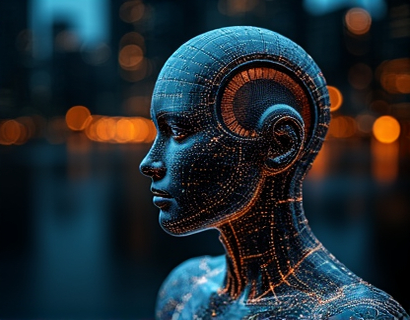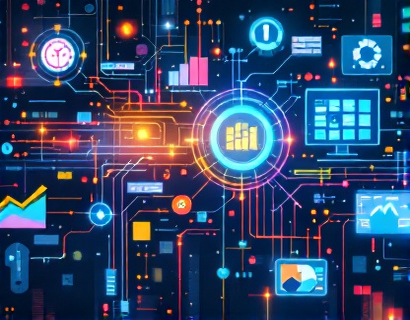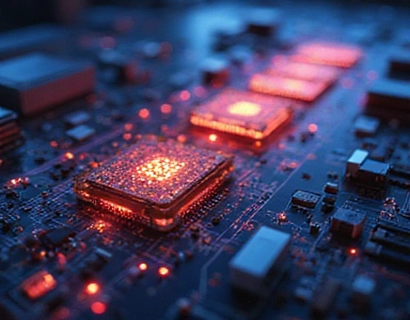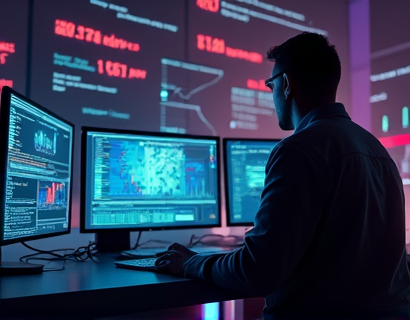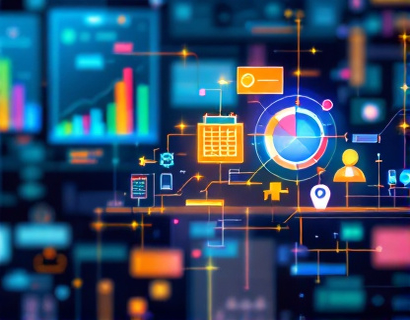AI and Crypto Fusion: Transforming Digital Experiences for the Future
The integration of artificial intelligence (AI) and cryptocurrency is ushering in a new era of digital transformation. This fusion is not just a technological curiosity but a powerful force that is reshaping how we interact with digital platforms, manage assets, and secure transactions. The synergy between AI and crypto is driving innovation, enhancing user experiences, and providing a competitive edge in the rapidly evolving tech landscape. This article explores the multifaceted ways in which AI and cryptocurrency are merging to create a more intelligent, secure, and engaging digital world.
Enhancing Security with AI-Driven Cryptography
One of the most significant benefits of combining AI and cryptocurrency is the enhancement of security measures. Traditional cryptographic methods, while robust, are increasingly being challenged by sophisticated cyber threats. AI brings a dynamic and adaptive approach to cryptography, enabling the creation of more resilient security protocols. Machine learning algorithms can analyze vast amounts of data to identify patterns and anomalies, predicting and mitigating potential security breaches before they occur. This proactive security model is crucial in a landscape where cyber threats are becoming more frequent and sophisticated.
For instance, AI can be used to develop advanced encryption techniques that evolve over time, making it harder for malicious actors to crack codes. Additionally, AI-powered systems can monitor blockchain networks in real-time, detecting and responding to suspicious activities with unprecedented speed and accuracy. This not only protects user assets but also builds trust in cryptocurrency as a reliable and secure form of digital currency.
Optimizing Blockchain Efficiency with AI
Blockchain technology, while revolutionary, faces challenges related to scalability and efficiency. Transaction processing times and energy consumption are critical issues that need addressing to make blockchain more viable for widespread use. AI offers solutions to these problems by optimizing blockchain operations and enhancing their performance. Machine learning algorithms can analyze transaction patterns and network conditions to optimize block sizes, transaction fees, and consensus mechanisms. This results in faster transaction times and lower energy consumption, making blockchain more sustainable and efficient.
Moreover, AI can improve the scalability of blockchain by predicting and managing network congestion. By analyzing historical data and current trends, AI systems can dynamically adjust parameters to ensure smooth and continuous operation. This not only enhances the user experience but also makes blockchain more attractive for businesses looking to adopt this technology for various applications, from supply chain management to financial services.
Personalized User Experiences through AI-Driven Insights
The fusion of AI and cryptocurrency is not just about security and efficiency; it is also about creating personalized and engaging user experiences. AI algorithms can analyze user behavior, preferences, and transaction history to provide tailored recommendations and services. In the context of cryptocurrency, this means that users can receive customized investment advice, asset management solutions, and personalized wallet experiences. This level of personalization enhances user engagement and satisfaction, fostering a more loyal and active community.
For example, AI-driven platforms can offer real-time market analysis and predictive insights, helping users make informed decisions. Smart contracts can be programmed to execute transactions based on specific conditions and user preferences, automating complex processes and reducing the need for intermediaries. This not only streamlines operations but also empowers users with greater control over their digital assets.
Enhancing Decentralized Applications (DApps) with AI
Decentralized applications (DApps) are at the forefront of the blockchain revolution, offering decentralized and transparent alternatives to traditional applications. However, the complexity and limited functionality of many DApps have hindered their widespread adoption. AI is poised to transform DApps by adding intelligence and automation to these platforms. Machine learning models can be integrated into DApps to provide advanced features such as natural language processing, image recognition, and predictive analytics. This enhances the functionality and usability of DApps, making them more appealing to a broader audience.
For instance, AI-powered chatbots can be deployed within DApps to provide 24/7 customer support, answer queries, and guide users through complex processes. These chatbots can learn from user interactions, improving their responses over time and providing a more seamless user experience. Additionally, AI can facilitate the development of more sophisticated smart contracts, enabling the creation of complex decentralized systems that can adapt to changing conditions and user needs.
Fraud Detection and Prevention in Cryptocurrency Transactions
Fraud and scams have been persistent issues in the cryptocurrency space, eroding trust and hindering growth. AI offers powerful tools for detecting and preventing fraudulent activities, ensuring a safer and more reliable environment for users. Machine learning algorithms can analyze transaction patterns, user behavior, and network activity to identify suspicious patterns and anomalies. By continuously learning from new data, these systems become increasingly effective at spotting fraudulent behavior in real-time.
AI-driven fraud detection systems can flag potential scams, alert users, and automatically initiate security measures to protect assets. This proactive approach not only safeguards individual users but also enhances the overall integrity of the cryptocurrency ecosystem. Regulatory bodies can also benefit from AI-powered monitoring tools, helping to enforce compliance and maintain the credibility of digital currencies.
Tokenization of Assets and AI-Enhanced Valuation
The tokenization of assets is a transformative trend in the crypto space, allowing physical and intangible assets to be represented as digital tokens on blockchain platforms. AI plays a crucial role in enhancing the tokenization process by providing accurate and dynamic valuation models. Machine learning algorithms can analyze a wide range of data points, including market trends, economic indicators, and asset performance, to generate real-time valuation estimates. This ensures that tokens are priced fairly and reflect the true value of the underlying assets.
AI can also optimize the tokenization process by automating due diligence, risk assessment, and compliance checks. By streamlining these tasks, AI reduces the time and cost associated with tokenization, making it more accessible to a broader range of assets and investors. This not only expands the potential market for tokenized assets but also promotes greater liquidity and investment opportunities.
AI-Driven Market Predictions and Trading Strategies
One of the most exciting applications of AI in the crypto space is its ability to predict market trends and inform trading strategies. Traditional trading methods rely heavily on human analysis and intuition, which can be limited by cognitive biases and the sheer volume of data. AI algorithms, on the other hand, can process and analyze vast amounts of data in real-time, identifying patterns and insights that humans might miss. This enables the development of more accurate market predictions and sophisticated trading strategies.
AI-powered trading bots can execute trades based on predefined algorithms and real-time market data, operating around the clock without fatigue. These bots can adapt to changing market conditions, optimizing trades for maximum profitability. Additionally, AI can provide traders with actionable insights and recommendations, enhancing their decision-making process and reducing the risk of errors. This not only improves individual trading outcomes but also contributes to the overall stability and efficiency of the cryptocurrency markets.
Building Trust through Transparency and Accountability
Trust is a fundamental component of any successful digital ecosystem, and the combination of AI and cryptocurrency is particularly well-suited to building and maintaining trust. AI can enhance transparency by providing real-time insights into transactions, smart contract executions, and network activities. Blockchain's inherent transparency is further amplified by AI-driven tools that analyze and interpret this data, making it more accessible and understandable to users.
AI can also ensure accountability by tracking and verifying the actions of all participants in the ecosystem. Smart contracts, powered by AI, can enforce predefined rules and conditions, ensuring that all parties adhere to agreed-upon terms. This reduces the risk of fraud and mismanagement, fostering a more trustworthy and reliable environment. Users can have confidence in the integrity of the system, knowing that AI is actively monitoring and maintaining standards of transparency and accountability.
Conclusion
The fusion of AI and cryptocurrency is revolutionizing the digital landscape, offering a range of benefits that enhance security, efficiency, personalization, and trust. From advanced cryptography and optimized blockchain operations to personalized user experiences and fraud detection, the potential applications are vast and transformative. As this technology continues to evolve, it is poised to play an increasingly significant role in shaping the future of digital interactions and transactions. Embracing the power of AI and cryptocurrency can provide a competitive edge, driving innovation and growth in the ever-changing tech landscape.





